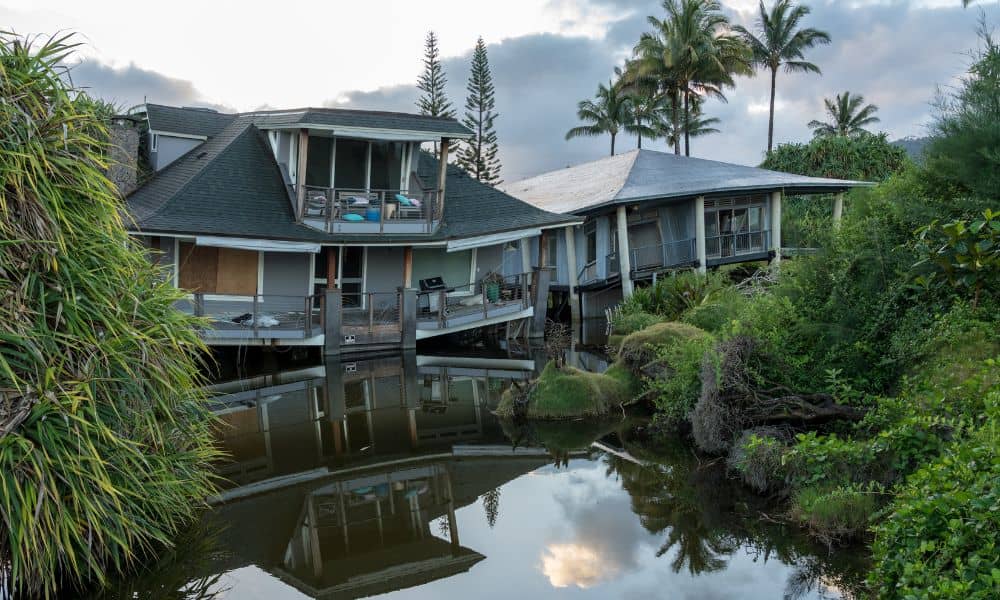
A flood elevation survey probably isn’t the first thing on your mind when you’re looking at homes in Tampa or planning to build. But if you’ve lived here long enough, you know flooding is part of life. Between summer downpours, hurricanes, and storm surges, water can creep up fast.
That’s why lenders, insurers, and even the city sometimes require you to get this survey done. Knowing when it becomes mandatory can save you from last-minute headaches and unexpected costs.
What Exactly Is a Flood Elevation Survey?
Think of a flood elevation survey as a property’s report card against rising water. A licensed land surveyor comes out and measures your home or lot compared to FEMA’s “base flood elevation” (BFE). In plain English, it shows if your property sits higher or lower than the flood risk line.
In Tampa, the results aren’t just numbers on a page. They’re turned into an elevation certificate—a document your insurance company, mortgage lender, or the city will ask for. Without it, you might end up paying higher premiums, or worse, you might not get approval for your project at all.
When Does a Flood Elevation Survey Become a Must?
Not every homeowner needs one. But in certain situations, you won’t be able to move forward without it.
Buying or Selling in a Flood Zone
Shopping for a home near Bayshore, Davis Islands, or anywhere mapped as a flood zone? A flood elevation survey is usually part of the deal. Lenders want proof of how risky the property is before they hand out a mortgage.
If you’re selling, having a survey ready makes your listing more appealing. Buyers want to know what kind of insurance costs they’re stepping into. Without the survey, closings can drag, and nobody likes delays when money and moving trucks are on the line.
Getting Flood Insurance

Tampa residents know flood insurance is often non-negotiable, especially if you’re in a Special Flood Hazard Area (SFHA). The National Flood Insurance Program (NFIP) uses a flood elevation survey to set your rates.
Here’s the good news: if your property is higher than FEMA’s flood level, you’ll probably pay less. But if you don’t have the survey, insurers may assume the worst and charge you more. A simple certificate can be the difference between an affordable policy and one that eats up your budget.
New Builds and Major Renovations
Dreaming about building a house near the river or remodeling your home by the bay? You’ll almost definitely need a flood elevation survey. This requires builders to show that new structures sit above floodplain levels before they hand out permits.
Even big additions—like raising your home, adding a second story, or expanding your footprint—can trigger the rule. Without the survey, your plans could get rejected before you even break ground.
FEMA and Local Compliance
Because it participates in FEMA’s flood programs, the city has to enforce strict rules. That often means a flood elevation survey is part of staying compliant. Ignore it, and you risk fines, permit denials, or even making your neighborhood ineligible for federal flood insurance programs.
It’s not just red tape—it’s about protecting homes and making sure everyone has access to affordable coverage.
Why Get One Even If You Don’t Have To?
Sometimes, you aren’t forced to get a survey, but it still makes sense.
- Save money: Prove your property sits higher than expected and your insurance bill could drop.
- Stay prepared: Storms don’t always follow the map. A survey gives you real numbers, not guesses.
- Boost property value: Buyers love transparency. Showing a flood elevation survey upfront makes your home easier to sell.
In short, it’s an investment that can pay off in peace of mind and lower costs.
How to Get a Flood Elevation Survey
If you find yourself needing one, the process is pretty simple:
- Call a licensed surveyor who knows floodplain rules.
- Schedule a site visit where they’ll measure elevations around your property.
- Receive your elevation certificate, the official document lenders and insurers want.
- Use it—whether for insurance, permits, or property deals.
Costs vary depending on the property size and location, but compared to the risks of not having one, it’s money well spent.
Tampa’s Unique Flood Realities
Let’s be real—living in Tampa means water is never far away. The bay, the rivers, and even heavy rainstorms put many neighborhoods at risk. That’s why the city and FEMA take flood elevation surveys seriously. They’re not just checking boxes—they’re protecting property owners from future losses.
If you live near low-lying areas like Westshore, Palmetto Beach, or even parts of Carrollwood, chances are higher you’ll run into the requirement.
Wrapping It Up
A flood elevation survey isn’t always optional. If you’re buying, selling, insuring, building, or renovating, there’s a good chance you’ll need one. And even when it’s not mandatory, it can save you money, prepare you for storms, and make your property easier to sell.
The bottom line: don’t wait until a lender, insurer, or city official puts you on the spot. If your property is near a flood zone, having a flood elevation survey done early gives you peace of mind and keeps you prepared.